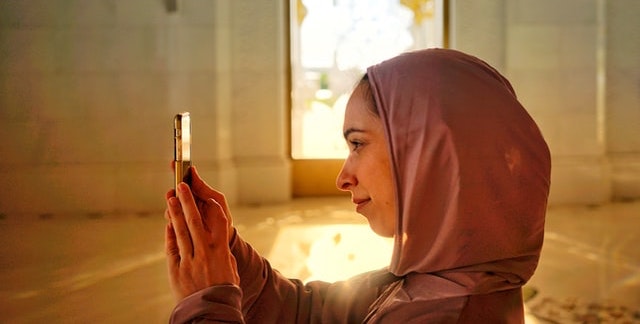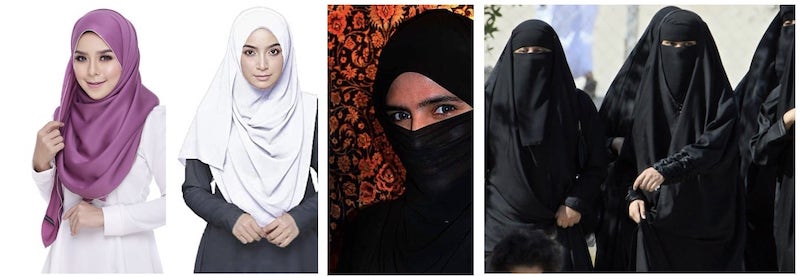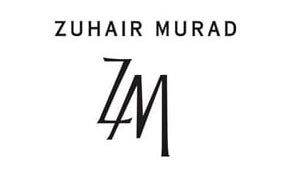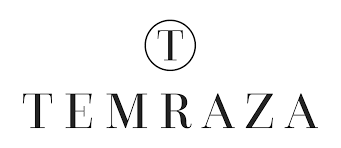The Arab fashion industry is one of the fastest-growing markets in the world, with a market value of billions of dollars. Women from Saudi Arabia, the United Arab Emirates, Qatar, and other Gulf countries spend a lot of money on high-end fashion.
Even though most of them wear abayas, they are pretty conscious of keeping up with the current trends. Although Dubai is the region’s shopping capital, other markets are rapidly growing, with Saudi Arabia taking the lead. The UAE has evolved as a hub of unique fashion design from streetwear to couture throughout the years, thanks to the unremitting efforts of creatives, entrepreneurs, and the business sector.
Qatar is also expected to become a regional powerhouse for luxury fashion, and its efforts to support the regional fashion scene have been lauded. Qatar has made significant investments in its fashion and luxury portfolio.

Arab Clothing Style
When it comes to clothing and dress for men and women, the Middle East offers a diverse and colorful globe. Local traditions and Western fashion mix in this complex world. While Western fashion has significantly impacted Arab countries, some traditional clothes can still be found. Age, Location, and Social class are factors that determine the way people dress in the Middle East.
Younger generations prefer to dress in Western attire and save their traditional garment for special occasions like weddings, religious celebrations, or pilgrimages. In contrast, older generations are more likely to be spotted in conventional clothing. On the other hand, people in cities are more aware of current fashion trends, but men and women in smaller towns still prefer traditional dress. Furthermore, traditional outfits and more conservative attires are more easily accessible in popular neighborhoods, whereas Western fashion is quite popular among the middle and higher classes.
Over time some aspects of Middle Eastern fashion have remained consistent, such as the fact that Arab fashion focuses on loosely fitted clothes, adornments across the head, colorful pieces of headscarves, and long, flowy dresses. However, as time passed, Arab fashion designers merged these designs into something elegant and exclusive, preserving Eastern fashion while creating something distinct that distinguishes Arab fashion from all other forms of fashion.

Women’s Wear
Arab women’s styles significantly change in different countries. Probably, the most familiar image that comes to mind of Arab women’s clothing is the black abaya, which is mainly worn by Emirati ladies. The abaya is a modesty garment that is worn over daily clothing. It covers the entire body except for the feet, face, and hands and is worn throughout the Islamic world. Abaya is normally made of crepe or cotton fabric, and its modern versions can be lavishly embroidered and quite costly.
Women cover their heads in accordance with religious tradition. A Shayla, a light scarf covering the hair, and a gishwa, a thin veil that covers the face but allows the user to see through, are two examples of headdresses known as hijab. Another option is a niqab, which completely covers the face with an opening for the eyes. The Shayla veil is a one-piece design.
A long scarf that wraps around the head is fastened under the chin and lays on the shoulders comfortably. It is the most popular type of hijab, especially in Gulf countries (with the exception of Saudi Arabia).

In some other Arab countries, Western clothing has had a greater influence on women’s clothing style. However, traditional costumes are still seen, especially in special ceremonies and rural areas. While it can be said that most Arab women wear the hijab, it should be considered that this is not a general rule in all Arab countries. Some Arab women are Christian or Jewish and may not follow the same dress codes, while some Muslim women choose to wear hijab or leave their hair undercovered.


Men’s Wear
The dishdasha or thobe is a white (or brown or grey) one-piece cotton garment worn by Arab men, with a headcover known as the “ghutra” and a black ring known as the “agal”. Dishdasha tends to be white as this is the coolest color to wear in the desert heat, but brown, black, or grey are seen more in winter months. On exceptional events, such as weddings, a long overcoat named Bisht is worn over the dishdasha.

Like women, men dress differently in different Arab countries. For instance, the Emirati version of a thobe is collarless and features modest embroidery on the sleeves, which distinguishes it from clothing worn in Saudi Arabia and Kuwait. Furthermore, it should be noted that only men in the Gulf are accustomed to wearing the headscarf and white thobe on a regular basis. Therefore, in addition to the traditional clothes that are different in each country, Arab men can also be seen with the usual clothing, which includes shirts and pants.
List of Top Arab Fashion Brands
Arab designers are making their mark on the global fashion landscape, from dressing leading Hollywood A-listers on red carpets to displaying their work at international fashion weeks. In the following essay, top Arab fashion brands are introduced.
• Elie Saab
Elie Saab is one of the world-famous Arab fashion brands. This brand has got its name from its Lebanese founder. Saab has been sewing since he was a child. His focus had shifted to fashion at the age of eight. He would cut patterns out of newspaper and scour his mother’s closet for materials, using his sisters as models.
The main workshop of Elie Saab is located in Lebanon, and it has additional workshops in Milan and Paris. Elie Saab has dressed many celebrities and royalties with its magnificent designs. This brand is known worldwide for its luxurious haute couture collections and wedding dresses.
• Zuhair Murad
Zuhair Murad is another reputable Lebanese fashion brand, undoubtedly at the top of the best Arab fashion brands list. In 1997, Murad opened his first atelier in Beirut. He made his debut appearance on the Rome catwalks in 1999, with a critically acclaimed collection that earned him a spot in the Italian calendar. The atelier only catered to private clients for the first few years, but Murad rose to worldwide prominence in 2001 when one of his collections was showcased at Paris Couture Week.
His brand continued to have success after success in the years that followed. Haute couture, ready-to-wear, and accessories are all part of his enormous collection. Zuhair Murad’s unique and eye-catching designs have repeatedly attracted everyone’s attention on the red carpet.
• Abed Mahfouz
Mahfouz began his career in 2001 with the “Al-Halimah” or “The Dreamer” collection, which concentrated on bridal attire. He became a household name and received international praise within a few years after launching his business. Its success propelled him into the realm of haute couture. Mahfouz was one of the first Lebanese designers to join Alta Roma, and his Spring/Summer and Fall/Winter Couture designs continue to be showcased there.
Abed Mahfouz’s sumptuous collections were presented at London, New York, Moscow, Marbella, Chenghai, Sofia, as well as Dubai and Beirut Fashion Weeks, in addition to Italy.
• Rami Al Ali
Rami Al Ali is an Arab fashion brand based in Dubai offering luxurious couture dresses, bridal, and ready-to-wear. His founder, Rami Al Ali, was born in Deir Ez-Zor, Syria. In 1991, he enrolled at the College of Fine Arts in Damascus, Syria’s capital city.
As his graduation project, he decided to plan and stage a fashion show. Thus, Rami Al Ali began his career and later achieved considerable success, featured in major publications such as Vogue, Bazaar, and Grazia. His brand is among the top Arab fashion brands having retailers in Dubai, Saudi Arabia, Thailand, Paris, and Qatar.
• Farida Temraz
Temraza fashion brand is known for its innovative and attractive designs. This Egyptian haute-couture label is founded and managed by Farida Temraz. Farida Temraz is the first and youngest Egyptian designer to participate in London Fashion Week, Los Angeles Fashion Week, and New York Fashion Week.
She was also the first Egyptian to win First Place among 15 international designers in Paris Fashion Week and “Best Female Couture Designer” in New York Fashion Week. Temraza brand offers couture dresses, bridal, basics, and beachwear to its customers.
Temraza has been seen on the red carpet at numerous prestigious events around the world, including the Academy Awards, Grammy Awards, Primetime Emmy Awards, Cannes Film Festival, Venice Film Festival, Screen Actors Guild Awards, Country Music and Television Awards, and many more.
Many fantastic fashion brands are based in Arab countries, and the brands mentioned above were just a few examples. In the following, top Arab fashion brands are listed.
Conclusion
While clothes may appear to be a minor consideration in Europe and America, they are not in the Middle East. There is an unlimited variety of Arab clothes worn in different countries, and only a part of them is mentioned in this article. Clothes are still an important part of any Middle Eastern country’s cultural character.
Some countries, such as Lebanon, have adopted Western trends in terms of fashion. In contrast, others, such as Saudi Arabia and Yemen, have clung to their traditional garb.
Arab countries are home to some of the world’s top fashion brands. Arab designers have shown their unique designs to everyone around the world by attending the most prominent global fashion events and dress many celebrities. Beirut, the capital city of Lebanon, has long been described as the “most fashionable city in the Middle East” due to the abundance of fashion designers and the holding of various fashion shows. Dubai is also the region’s shopping capital having numerous luxurious shopping malls containing stores of top fashion brands.
Clothing is a big business in the Middle East, maybe even more significant than in the West. Clothing style in Arab countries reveals the personality, region, and social class of the wearer. Furthermore, the decision to wear a specific piece of clothing has a moral significance. Some Arabs, for example, believe that women who do not wear hijabs are more open-minded and have fewer morals, whereas women who do wear hijabs are more devout and so respectable. As a result, clothing in the Arab countries has a larger social and moral dimension compared to other countries.












































Nice post.
Thank you for sharing a informative information with us.
Visit my links to find best designer clothing retailers in United arab emirates.